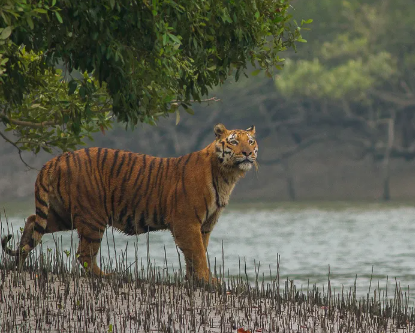The Majesty of Royal Bengal Tigers
Royal Bengal Tigers are not just a symbol of strength and beauty; they play a crucial role in maintaining the balance of their ecosystem. Revered across cultures, these magnificent creatures face significant threats from habitat loss and poaching. Understanding their significance and the challenges they face is vital for conservation efforts and fostering a deeper appreciation for wildlife.
Habitat and Distribution
Royal Bengal Tigers primarily inhabit the lush forests of India, Bangladesh, Nepal, and Bhutan. They thrive in diverse environments, from tropical rainforests to grasslands and mangrove swamps. The Sundarbans, a UNESCO World Heritage Site, is home to a notable population of these tigers. These habitats provide essential resources for their survival, including prey like deer and wild boar. However, human encroachment and climate change pose serious threats to their natural environments, making conservation efforts increasingly important.
Conservation Status
Currently, Royal Bengal Tigers are classified as endangered, with an estimated population of around 2,500 individuals left in the wild. Poaching for their beautiful pelts and body parts, combined with habitat fragmentation, has severely impacted their numbers. Various conservation programs are underway, focusing on habitat preservation and anti-poaching initiatives. Awareness campaigns are also crucial in educating the public about the importance of these majestic animals and the need for their protection.
Fun Facts About Royal Bengal Tigers
Did you know that Royal Bengal Tigers are the largest wild cats in the world? They can weigh between 220 to 660 pounds and can reach lengths of up to 10 feet! Their stunning orange coat with black stripes helps them blend seamlessly into their environments, making them skilled hunters. Unlike domestic cats, Royal Bengal Tigers are excellent swimmers and often enjoy cooling off in water bodies. Their roar can be heard up to two miles away, creating a powerful sense of territory.
Conclusion
Royal Bengal Tigers are more than just majestic creatures; they are vital to their ecosystems and cultural heritage. By learning more about their habitat, conservation status, and fascinating traits, we can better appreciate the importance of protecting them. Let’s take active steps towards conservation efforts and support organizations dedicated to safeguarding these remarkable animals. Together, we can ensure that future generations will also marvel at the beauty and strength of the Royal Bengal Tiger.

